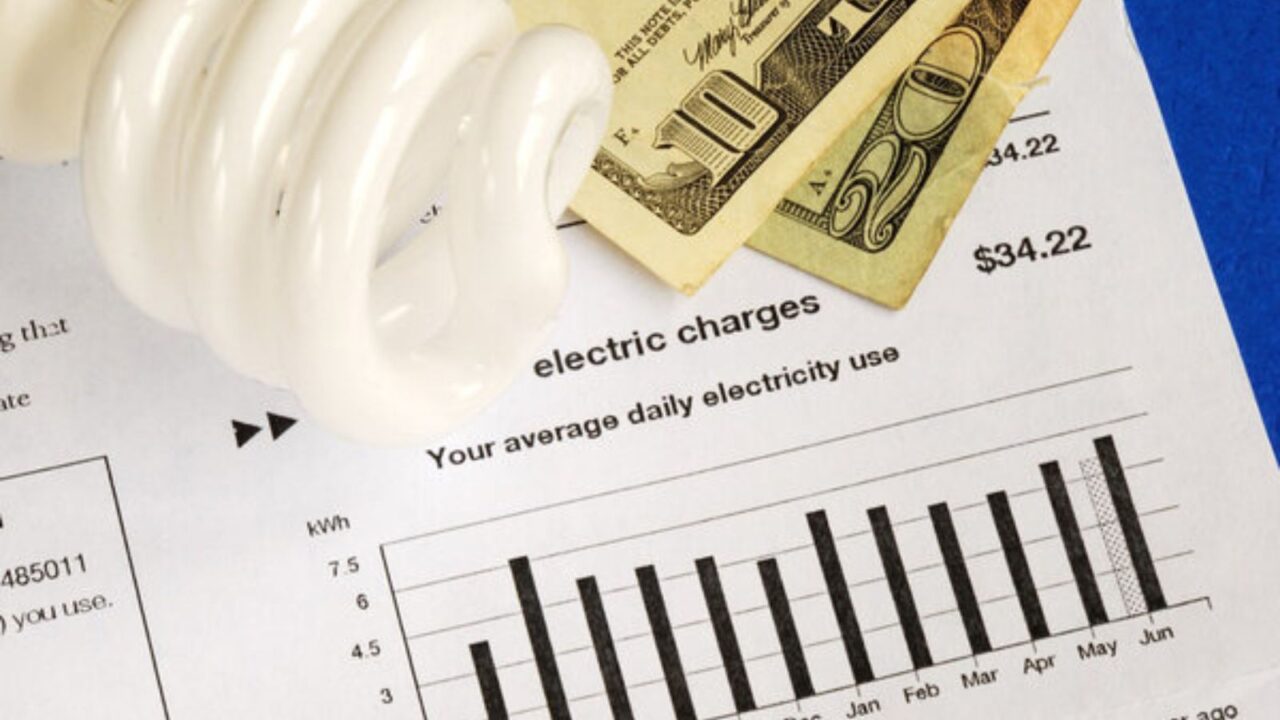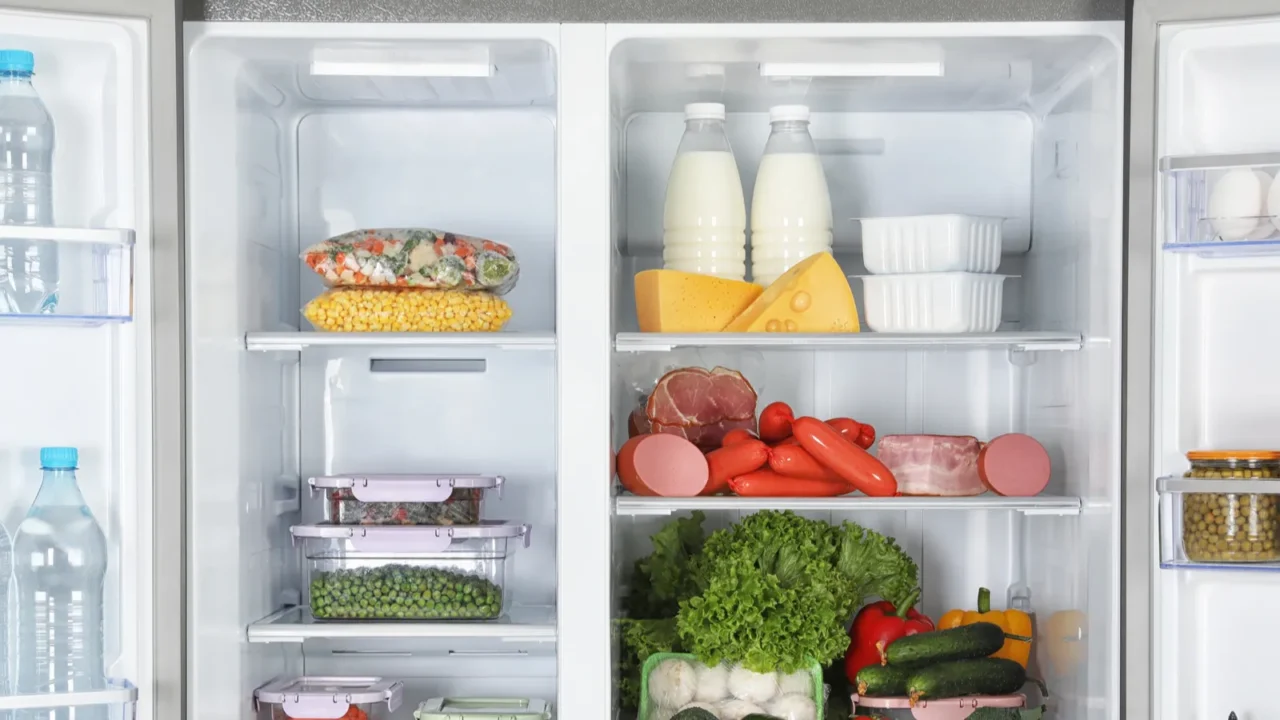
Start with the Biggest Energy Users
Understanding what consumes the most energy in your home is key to reducing usage.
Appliances like air conditioners, heating systems, refrigerators, and pool or spa pumps are typically the biggest culprits. For winter, it’s definitely a heating system.
Addressing these energy hogs first can lead to the biggest savings.
For example, HVAC systems should be serviced annually to ensure efficient operation, and drafts around windows and doors should be sealed to prevent heat (or cool air in summer) from escaping.

Insulate to Reduce Heating Needs
Proper insulation is one of the most effective ways to reduce energy costs.
Start small with inexpensive draft stoppers and weatherstripping for windows and doors. Then, insulate your attic and walls or upgrade to energy-efficient, double-pane windows.
If the budget allows, upgrade to energy-efficient, double-pane windows. These steps change your home’s overall comfort in extreme winters while reducing the energy cost.

Use Appliances Wisely
Certain appliances like washers, dryers, and dishwashers consume less energy when used during off-peak hours.
Running them early in the morning or late at night reduces strain on the grid and helps you save on energy costs. Additionally, make sure to run a full load of dishes and laundry in one go.
If you’re planning to buy any new appliance during the holiday, prioritize Energy Star-certified options. They consume 10-50% less energy than standard models.

Make Your Refrigerator Work Smarter
Refrigerators run constantly, making them one of the biggest energy users in your home. Maximize efficiency by keeping them full; even bottles of water help maintain a stable temperature.
Clean the coils and motor area yearly to improve performance, and ensure the motor has proper ventilation.
Don’t forget to check the seals. A simple test with a dollar bill can reveal if cold air is escaping. Replacing faulty seals not only improves efficiency but can also extend the life of your fridge.

Switch to LED Holiday Lights
LED lights use up to 80% less energy than traditional incandescent bulbs. These lights stay cooler, reduce fire hazards, and last significantly longer.
Bonus? They’re brighter and come in various designs, a win-win for festive decor.
Moreover, If you’ve been using the same string of lights for years, consider upgrading. It’s a small upfront cost that pays off with big savings over time.

Use Timers for Outdoor Displays
Set timers to control when your outdoor displays light up and shut off. A six-hour nightly display is enough to spread holiday cheer without hiking up your energy bill.
Smart plugs with scheduling features make this process even easier, and they’re widely available. Avoid leaving lights on all night. It’s wasteful and unnecessary.

Save Energy During Cooking
Holiday meals often mean hours in the kitchen, but you can save energy with smarter cooking. Plan oven use efficiently by baking multiple dishes simultaneously or choosing recipes with similar temperatures.
Skip preheating for dishes that don’t need it to conserve even more energy. For smaller meals, switch to microwaves or slow cookers, which use significantly less power.
Slow cookers are perfect for holiday classics like stews, mulled cider, or desserts, creating a cozy vibe while saving energy and time.

Master Phantom Energy Use
Even when devices are turned off, many continue to draw power, contributing to “phantom energy” usage. Chargers, gaming consoles, and TVs are common culprits.
Plug these devices into power strips, and turn off the strip when the devices aren’t in use.
For larger appliances, consider energy monitoring tools to identify hidden drains on your electricity.

Embrace Energy Monitoring Tools
Energy monitors like the Emporia can track usage across multiple circuits. They give you detailed insights into where your energy goes.
These tools can help you pinpoint major energy drains, like aging appliances or devices left on standby. Knowing which appliances are the biggest culprits allows you to make informed adjustments.

Adjust Water Heating Habits
Water heating is a hidden energy hog in most homes. Lowering your water heater’s thermostat to 120°F can reduce costs without sacrificing comfort.
Consider insulating the heater and nearby pipes to minimize heat loss. Use cold water for laundry whenever possible, and switch to shorter showers, especially during colder months when energy use typically spikes.

Install Smart Thermostats
A smart thermostat can save you hundreds annually by optimizing heating and cooling schedules. These devices learn your habits, and then automatically adjust the temperatures when you’re away or asleep.
Some models even allow for remote control via smartphone. Adding one in your home makes it easier to stay energy-efficient during the busy holiday season.

Host Energy-Efficient Gatherings
Plan holiday get-togethers during the day to take advantage of natural light. This minimizes the need for indoor lighting and reduces energy use.
Cook smarter by preparing dishes that can be baked at the same temperature or in batches to save oven energy. Give your guests extra throws to layer up and get cozy so you can keep the thermostat low without sacrificing comfort.

Layer Up Before Cranking the Heat
Instead of turning up the thermostat when it’s cold, add layers to stay warm. Sweaters, socks, and cozy blankets can help you maintain comfort without increasing energy costs.
Further, use heated throws or small space heaters sparingly in rooms you occupy most often. These habits reduce your heating bill and also promote a more sustainable approach to staying warm.

Let the Sun In
Take advantage of natural sunlight to warm your home during the day. Open curtains or blinds to let the sun’s rays heat up your space for free.
At night, close the drapes to trap that warmth and block out chilly drafts. It’s another simple habit that makes a noticeable difference in comfort and energy savings.

Insulate Your Pipes for Big Savings
Wrapping your hot water pipes with insulation reduces heat loss, so water stays warmer longer. This means your water heater works less, cutting energy costs.
Bonus: insulated pipes prevent freezing in winter, saving you from costly repairs. Pipe insulation is affordable, easy to install, and a smart move for any homeowner.
Want to know more must-do for the winter? Check out How to Make Your Home Winter-Ready.

Close the Damper When Not Using the Fireplace
Leaving your fireplace damper open is like leaving a window wide open in winter. Through an open damper, heated air escapes, and chilly drafts pour in.
If you’ve ever wondered why your living room feels cold despite cranking the heat, this could be the culprit.
Close the damper when the fire’s out to keep cozy and save money. For more tips related to fireplaces, check out this article: Get Your Fireplace & Chimney Ready for Winter.